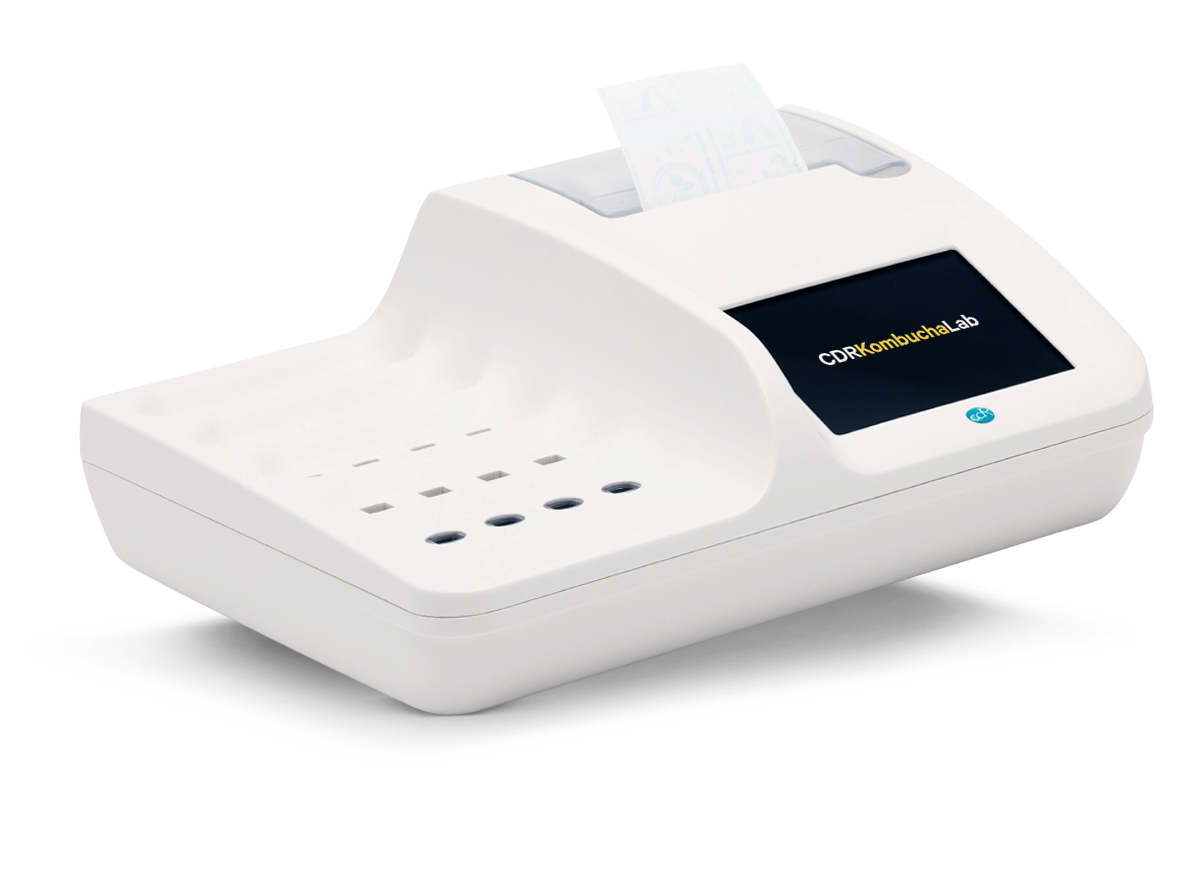Determination of Alcohol by Volume (ABV) in Kombucha
The symbiotic culture of acetic bacteria and yeasts immersed in the sweetened tea infusion triggers an alcoholic fermentation that can bring about variable alcohol concentrations from traces by approximately one percentage point.
Normally the majority of kombucha on the market have an alcohol content that is below 0.5%. The measurement of this parameter is very important for legal purposes as a concentration above 1.2% requires registration of the beverage produced as "alcoholic".
There are also products called “hard kombucha”, with a higher alcohol concentration.
Method
Test Principle
Ethanol, in the presence of NAD+ , is oxidized by enzymatic route to acetaldehyde with the consequent production of NADH. The increase in absorbance, measured at 366 nm at the end-point, is directly proportional to the concentration of ethanol in the sample. The result is expressed in %v/v.
...
Calibration curve
The calibration curve of the CDR KombuchaLab instrument, obtained by comparing the CDR method with the distillation method for determination of the alcohol content, confirmed an excellent linearity of the system over the entire measurement range.
...
Reagent test Kits
Measuring range
| Analyses | Measuring range | Resolution | Repeatability |
|---|
The Analyzers for process and quality control in kombucha brewing
CDR KombuchaLab
- Complete analysis panel, supplied already configured
- Up to 16 determinations simultaneously
- Possibility of carrying out analyses of the same sample
- Integrated printer
- Full connections (LAN - USB - Bluetooth barcode/QR code reader)
CDR KombuchaLab Jr
- Partial analysis panel, supplied configured with 3 analyses of your choice, implementable
- Up to 3 determinations simultaneously
- Wireless connection to external printer
- USB connections
